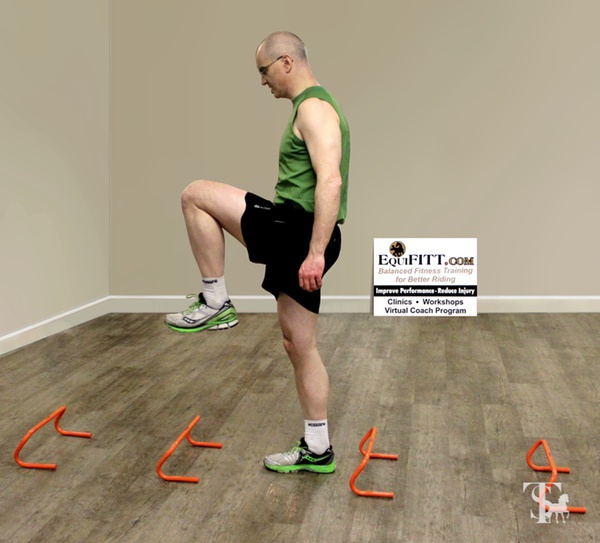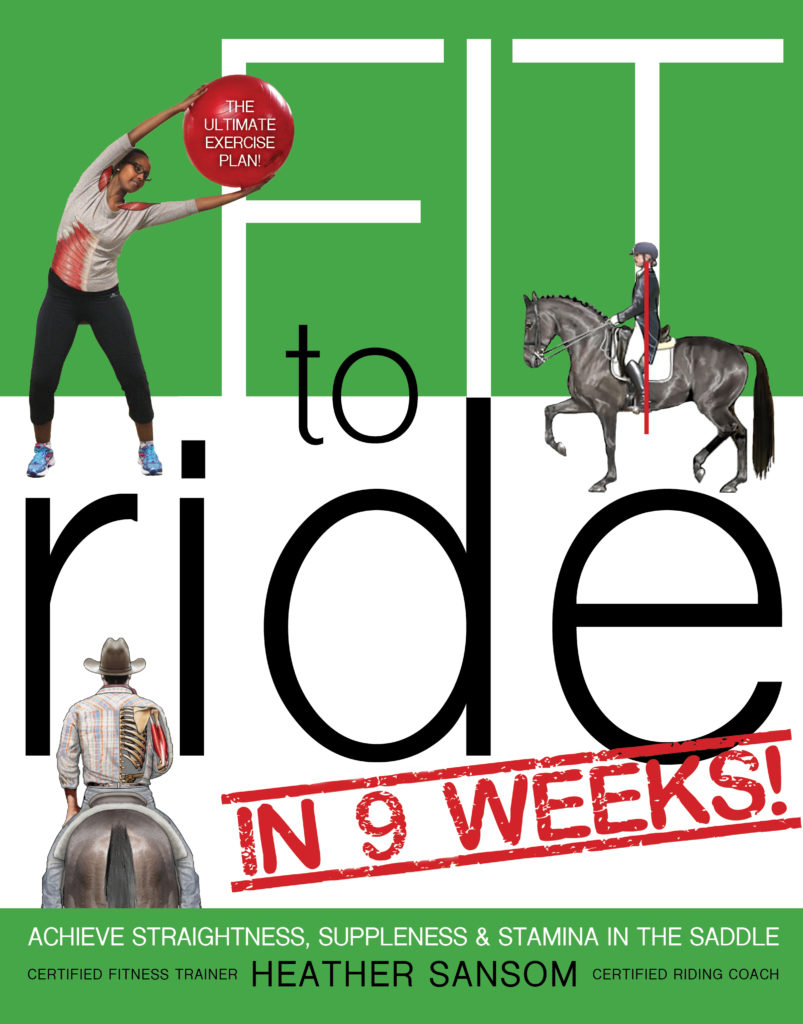This excerpt from Fit to Ride in 9 Weeks! by Heather Sansom is reprinted with permission from Trafalgar Square Books (www.horseandriderbooks.com).
In these rider fitness exercises from Fit to Ride in 9 Weeks! by Certified Fitness Trainer and Riding Coach Heather Sansom, we improve our proprioceptive awareness and ability to deal with sudden movements or changes in the horse’s way of going.
Speed work is intended to train your proprioceptive awareness and ability to maintain a neutral and engaged core with joint suppleness while encountering unexpected or significant changes in your position. It is incredibly important to start out very slowly with all speed work so that you gradually train muscle memory and firing pattern. Be ridiculously slow. If you rush too quickly, you can risk exceeding your actual proprioception and ability to control movement. If you do this, you will train compensatory patterns instead of the precise body control with core engagement that you want.
Also, pay attention to the rhythm of your exercise. If you speed up and slow down, change your speed and rhythm precisely. Do not wander all over the map with random changing rhythms that you have not purposefully decided to use.
Agility Drills
Goal: 2-3 times per week, 10 minutes.
Focus: Balance, coordination, and the ability to switch between tasks.
The basic idea is to set up an obstacle course that requires you to change your footwork patterns and use a lot of coordination. Run through your course at progressively faster speeds until you reach the maximum at which you can run the course safely and in full control of your body. See how many times you can repeat it at this speed inside 3 minutes.
These add variety to your standard fitness routine and improve your reaction times. Sample agility drill ideas:
- Set up items such as hula hoops or other objects that you step into, on, or over, in a pattern with spaces in between so that you have to speed up between stations then slow down to do the footwork.
- You can incorporate your mounting block, hay bales, and pitchfork handles in a pattern to step on or over. One sample of a drill for coordination is walking and high-stepping over obstacles.
Shadow Jumping
Goal: 20 minutes, 2-3 times in week.
Simulating jumping a course trains endurance in your leg muscles with simultaneous core stability, joint softness, and responsiveness (eye-body coordination). When you Shadow Jump, you follow someone else’s ride. By doing this, you need to have much more control over your body’s balance and continuously return to a neutral and ready position so that you can follow the course without getting left behind. By repeating the exercise for a longer time, you will challenge your ability to maintain focus and balance when you start to get tired.
- Position yourself in front of a television or other screen where you can watch a professional show-jumping competition. These can be live, recordings of the World Equestrian Games and the Olympics, or clips on YouTube, for example.
- Stand in your riding two-point position with a neutral spine and soft joints on two tennis balls or another balance object. “Ride” the course with the rider on the screen, and see if you can keep the same timing.
- Practice one or two rides (the same ones) until your timing is perfect, then see if you can follow random other selections from competition videos or YouTube, with better timing.
Note: To mimic a jump, drop your body down. Although jumping means that you go up on a horse, the biomechanical reality for your legs is that they fold in that moment as the horse and your stirrups rise up under you. To mimic this momentary demand for joint folding while keeping your balance, drop your body down.
These exercises work on your cardiovascular stamina as well as timing and ability to switch rhythm or gait. When your brain and body have trouble working together to make clean transitions in the type, rhythm, or speed of the task you are performing generally, this has a negative impact on the application of this same ability in the saddle. When you train sharper response times on the ground, you will have much cleaner transitions in the saddle.
Most riders do not realize that transitions and gaits for your horse are not just a matter of you applying the right aid at the right time to start the motion. You also have to be suddenly on board and following the new motion with your body as well. Your horse can only transition into clear movements as cleanly and clearly as you can. Also, it is one thing to be able to switch tasks well, but it’s an entirely different challenge to be able to do it over time, or in moments of higher physical demand.
Physically and mentally, a rider needs to have integrated core stability and trained her body to maintain softness in the upper body and suppleness in the hips at the same time as having a stable core. Otherwise, tensions and blockages in the body will stop the neuromuscular connections required for clear communication and switching tasks.
Pick up your copy of Fit to Ride in 9 Weeks! from Trafalgar Square Books HERE!


